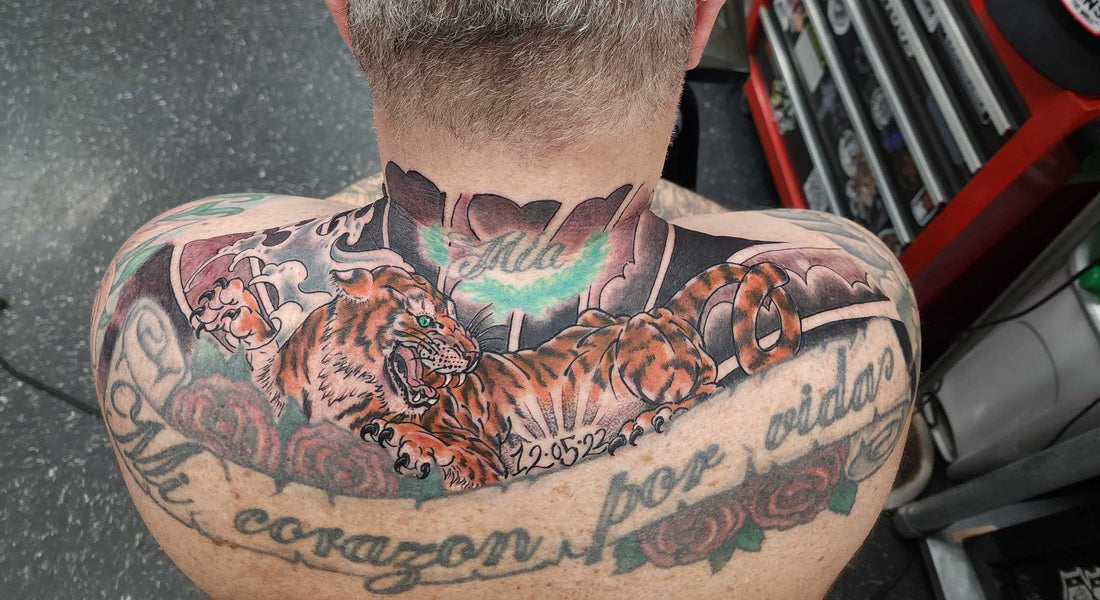
What are Japanese Traditional Tattoos?
Share
Much like the American traditional style, the Japanese traditional tattoo has a rich history. On paper, the two styles bear some of the same characteristics, such as bold lines, and vibrant colors. In practice, however, American traditional and Japanese traditional tattoos are quite different. Both styles feature symbolic images that have their won meanings and significance. In the Japanese traditional style, these symbols are deeply rooted in folklore. In this article we will explain the Japanese traditional tattoo style and provide definitions for works like "Irezumi," and "Tebori."
Irezumi vs Tebori
These are two words that appear often when discussing Japanese traditional tattoos. In fact, they are sometimes used interchangeably, even though they do have different meanings. "Irezumi" has a relatively broad definition, as it refers to the general art form of tattooing. "Tebori," on the other hand, refers to the traditional method of using a metal or bamboo tool to hand-poke tattoos. This method is tedious and time consuming, but many Japanese tattoo aficionados claim that it results in cleaner and more vivid tattoos in the long run.
What Are the Characteristics of Japanese Traditional Tattoos?
There are a few features that can signify if a tattoo is of the Japanese traditional style. For starters, Japanese traditional tattoos usually feature bold outlines and vibrant colors. While this may seem similar to the American traditional style, the two are actually quite different. One of the most easily recognizable differences is that the Japanese traditional style of tattooing utilizes a broader spectrum of colors, including red, black, purple, green, blue, yellow, pink, and white. Japanese traditional tattoos can also often feature very intricate details.
Symbolism plays an important role in Japanese traditional tattooing. Dragons, koi fish, wind bars, and ocean waves are just a few of the images that appear throughout the style. Each of these images bears its own symbolic meaning that comes with rich history and folklore. For instance, tigers represent courage and a willingness to protect one's home. Similarly, tattoos of samurais may also represent someone who is a defender. The image also epitomizes discipline and honor. Even flowers, which are often used to fill space between larger pieces of a design, have meaning in Japanese tattooing. Cherry blossoms represent the ephemeral beauty of nature, lotuses represent rebirth, and peonies signify prosperity. Because of the various meanings attached to images in the Japanese traditional tattoo style, it is important for clients and artists alike to study and respect the culture when engaging with it.
To see some examples of various Japanese traditional tattoos, check out the Japanese traditional tattoo gallery on our site. Many of these tattoos were done by our artist, Spider, who has much experience tattooing this style. Also, check out Spider's tattoo portfolio for some Japanese tattoo examples.
Japanese Bodysuit Tattoos
Another distinctive trait of Japanese traditional tattoos is that they often cover large areas of the body. Sleeves, back pieces, and full-body suits are very common in this style. They often feature intricate and cohesive arrangements of various symbolic images. If you are interested in booking a consultation for a Japanese traditional tattoo, visit American Vintage! Our artists have the skill, knowledge, and respect for the traditional that is needed to properly celebrate the classic elegance of Japanese tattooing.